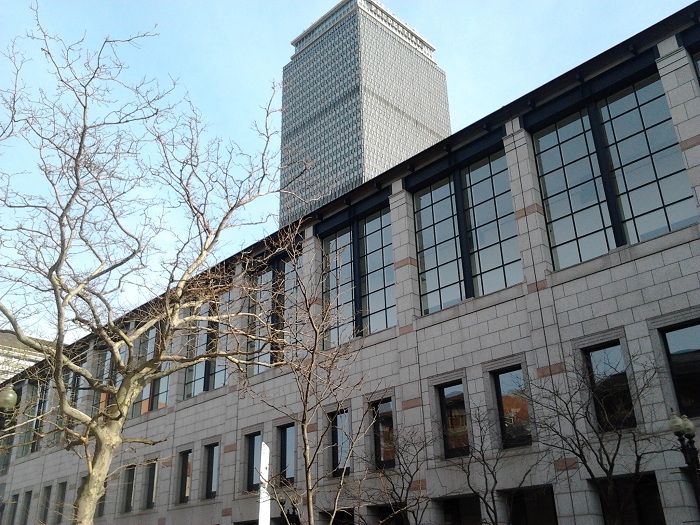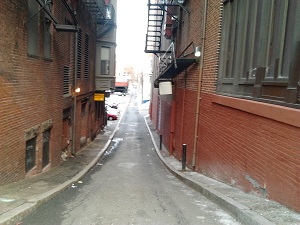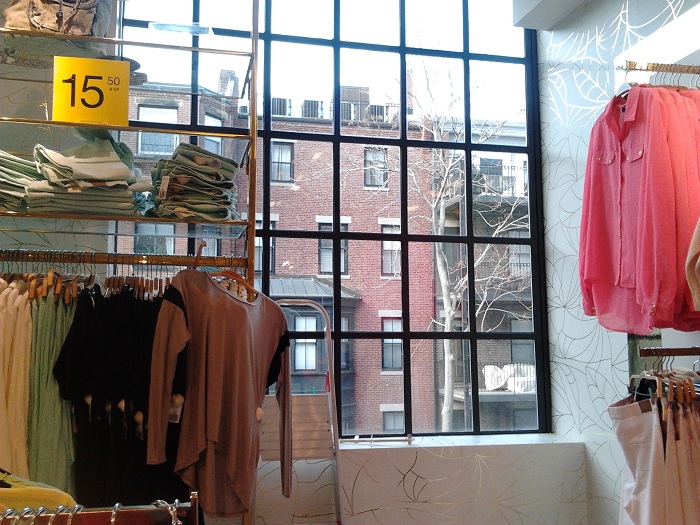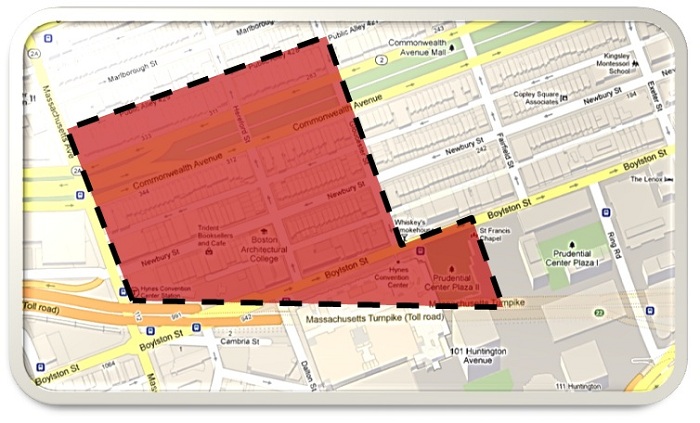 Figure 1: Map of the Newbury Street Site
Figure 1: Map of the Newbury Street Site
As I was reading Grady Clay’s Close up: How to Read the American City, I came across a meaningful description on what a city has to offer. Clay writes, “Each [city] reflects the ideas, traditions, and energies available to its citizens in past centuries, as well as at this moment” (Clay 14).I have chosen a site (Figure 1) in the northern section of Boston, Massachusetts that I would like to explore and experience what Clay spoke about.
The site is bounded by Massachusetts Avenue, the Massachusetts Turnpike, Gloucester Street, and Boylston Street, featuring the Prudential Center. Many of my previous visits to this site have been due to the attractions of the famous Newbery Street and also the Prudential Center (Figure 2). But as I visited again for the reason of studying the site and looking for clues, I now have many questions that I’d like to answer over the next few weeks. In general, I would like to know how the historical, social, and economical events shaped my site into the diverse and popular area of Boston that it is today.
 Figure 2: A picture of the Prudential Center in comparasion to the other, shorter buildings.
Figure 2: A picture of the Prudential Center in comparasion to the other, shorter buildings.
The site I have selected is very diverse in terms of land usage. There are apartments, large brick houses, fraternity houses, and “houses-turned-into-businesses” that can be found in the northern part of the site. Along the western border (Massachusetts Avenue), there is a subway stop and the Convention Center, in addition to a few large buildings used for commercial businesses like Best Buy. The southern border is shaped by the Massachusetts Turnpike. A fire station and the Prudential Center are located just off the bridge that crosses over the turnpike. As I walked along the east section of my site, I noticed small shops, such as cafes, larges houses, and supply stores. In the center of my site, there were popular clothing stores like Urban Outfitters and Forever 21 and small restaurants like Pinkberry and Ben and Jerry’s along Newbury Street. Along the center of Commonwealth Avenue, runs a strip of land all covered by trees and grass with a jogging path in the middle that directly connects to a park a mile east of my site.
 Figure 3: Public Alley 428
Figure 3: Public Alley 428
The first observation that compelled me to choose this site was the “Public Alley”. In Figure 1, you can see that the northern part of my site is bordered by Public Alley 428 and 429. I wondered why these alleys were named and numbered the way they were. I walked two blocks down the alley taking note of back entrances to houses and small parking lots. The alley was narrow and seemed to be able to fit only one car (Figure 3).
Taking a look on a satellite view of the site, I noticed that the blocks are in a perfect grid system. This means that the street intersections are perpendicular to each other. On the southern part of my site, there is a break caused by the Massachusetts Turnpike which interrupts the grid system. Clay writes, “ And along this zone of fractured intersections one encounters a new framework with…building setbacks,”( Clay 44). Due to the break, I can see that the shape of building, located along the intersection of the turnpike and Massachusetts Avenue, was influenced by the turnpike. The building is supposed to be a square, but is in the shape of a trapezoid where it meets the tool road.
 Figure 4: Picture taken within the store 'Forever 21' with residential housing in the background
Figure 4: Picture taken within the store 'Forever 21' with residential housing in the background
I noticed other unique characteristics of my site. A lot of the houses, mostly on Newberry Street, were turned into clothing stores and small boutiques with apartments located upstairs. For example in one building, Steve Madden is located on the ground floor while there are living quarters upstairs. Also on Newbury Street is a painting on the side of a building called “Krycha-Picasa”.
 Figure 5: Street Map of site
Figure 5: Street Map of site
These are things that I’d like to continue exploring. I believe my site is part of an “epitome district” which Clay defines as an area that “…trigger[s] awareness to the larger scene” and “…offer[s]…the most compelling evidence of the present and future change,” (Clay 38). Hopefully with these observations, in addition to historical research, I will be able to find the evidence that has shaped my site.